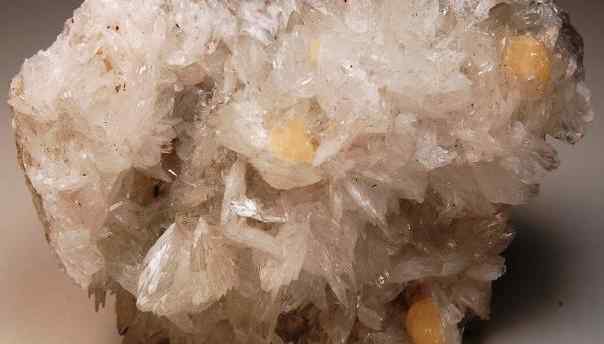The medical name for diaper rash is ” ammonia dermatitis “. This name explains everything. Irritation of the skin around the butt, groin and external genitals with ammonia is called diaper rash. Although there is plenty of urea in freshly made urine, there is no ammonia. Urea does not irritate even the most sensitive skin. However, if the urine stays under the baby for a while certain bacteria turn the urea into ammonia and ammonia irritates the skin.
How Does Rash Occur in Babies?
The thin, protective oil layer on the surface of the skin passes through moisture and waste (urine-stool) and the skin becomes irritated. To prevent this, the diapers used by the baby should always be changed frequently and of good quality. Diaper rash is a condition caused by a fungus called Candida albicans. This fungus loves the chemistry of feces and urine. The moist and warm area is also a good environment for fungus to grow. Rash usually the lower cloth in the baby’s skin in contact with the point light embossed form emerges profits. When it gets worse Small swelling with reddening, water-filled blisters and similar skin changes that cause pain to the baby can be seen. If the rash becomes infected, these skin rashes may turn bright red and enlarge. Small red rashes may spread beyond the contact area of the gland.
The most common period is babies between 9 and 12 months. It starts around the anus, inguinal folds, under the penis, scrotum and skin, in girls with a rash over the labia majora.
In the area with diaper rash; He feels stinging, burning and itching. This causes constant crying and restlessness.
Ways to Prevent Diaper Rash in Babies
1 – The basic rule of preventing and treating the scab is to keep the area covered by the cloth clean, dry and cool. The baby’s diaper should be changed frequently, care should be taken to keep the diaper open as much as possible and ventilated as often as possible. During the changing of the baby’s diaper for 10-15 minutes without the diaper being tied, the baby’s diaper is open and its contact with air is also very protective. While the diaper of the baby is tied, it should be loosely tied in the waist area as much as possible and air should circulate in the diaper.
2 – The right size diapers suitable for the baby’s weight must be selected. Small ones than they should be squeezed and disturbed the baby and large ones leak and cause discomfort in the baby’s bottom.
3 – After each large toilet, the bottom should be cleaned with warm water.
4- While cleaning the cloth area; Cotton dipped in warm water should be used. Warm, very slight foaming disinfectant soaps or clear water, washed with urine and feces thoroughly with gentle movements must be cleaned with a soft towel should be dried gentlyis. If cleaning wipes are to be used, they should be suitable for baby skin, soft and alcohol-free. Soap and shampoo should not be used more than three day . Using it every day will prevent the skin from forming a protective layer.
5 – Before attaching a new diaper to the baby, make sure that the diaper is thoroughly dry.
6 – through Diaper synthetic material arranged clothes should not be wearing is.
7 – If the fabric when the diaper is used, these cloths after washing and chemical substances to disinfect at least 15 minutes for must be welded is.
8 – Antibiotics and all medicines that pass into breast milk affect the baby. In order to prevent diaper rash in the baby, the mother should be fed with natural foods and should not take the medications she will use without consulting the specialist.
9 – The mother should follow the baby’s diaper and pay attention to the color, frequency and amount of urine and poop. Normally, the baby’s urine becomes colorless, slightly yellow. The urine of babies who do not eat enough and do not take enough fluids may be dark yellow or pinkish .
How is Rash in Babies Treated?
1 – Diaper rash treatment should be aimed at the cause and random creams should not be used.
2 – The area of the baby with diaper rash should only be cleaned with water. If the baby’s diaper rash continues, the diaper type and wet wipes should be changed. If it should be used, the final cleaning should be wiped with wet cotton soaked in water and then applied with olive oil . Some experts recommend that the fecal butt be washed gently with warm water with 1-2 drops of baby oil. This area is then cleaned with a clean, soft, absorbent cloth.
3 – Baby’s diaper, hour should be checked and replaced immediately when wet. The aim is to keep the baby’s diaper dry.
4 – If the baby is not uncomfortable and especially asleep and the diaper should be left open and allowed to air. If the rash has started, the ventilation period should be kept longer. If possible, the place of diaper rash should be exposed to sunlight.
5 – If irritation starts, you should get up at night and change the diaper. Cloth diaper on the baby’s diaper during sleep. Connecting with is a valid method. In this case, the baby’s bottom should be checked immediately after falling asleep and if it is wet, it should be changed immediately. Since babies usually urinate in the meantime, this check should be done right after the baby falls asleep.
6 – In the fight against diaper rash, a cream that can rapidly affect any stage of diaper rash can be used. Creams containing zinc oxide, lanolin, wild buckthorn, coconut oil, panthenol can be used. It creates a barrier that protects the baby’s skin from wetness. However, before applying this cream or ointment, the baby’s skin should be dry. Attention should be paid. Rash cream should be applied to the dry skin of the baby in a thin layer, especially between the skin folds. Zinc oxide creams should be less than in the first 4 weeks, known as the “neonatal period” and should be at most in the following months.







